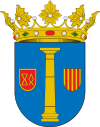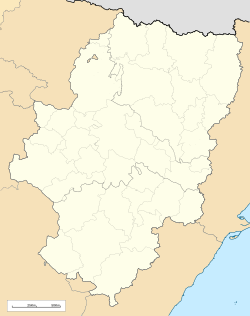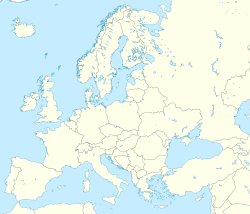Botorrita facts for kids
Quick facts for kids
Botorrita
|
|||
|---|---|---|---|
 |
|||
|
|||
| Country | |||
| Autonomous community | |||
| Province | Zaragoza | ||
| Comarca | Zaragoza | ||
| Area | |||
| • Total | 19.8 km2 (7.6 sq mi) | ||
| Elevation | 394 m (1,293 ft) | ||
| Population
(2018)
|
|||
| • Total | 498 | ||
| • Density | 25.15/km2 (65.14/sq mi) | ||
| Demonym(s) | Botorritanos | ||
| Time zone | UTC+1 (CET) | ||
| • Summer (DST) | UTC+2 (CEST) | ||
Botorrita is a small town, also known as a municipality, located in the province of Zaragoza, in the region of Aragon, Spain. About 574 people live there.
Botorrita is famous because of the amazing ancient objects found there. These objects, especially some special metal plates, tell us a lot about the people who lived there long ago.
What is Botorrita Known For?
Botorrita is most famous for its important archeological discoveries. Archeology is the study of human history and prehistory through digging up old sites and analyzing artifacts. The most significant finds in Botorrita are a series of ancient metal plates called the Botorrita plaques.
Ancient History of Botorrita
Long ago, when the Romans were powerful, they knew Botorrita by a different name: Contrebia Belaisca. This name comes from an older language called Celtiberian. It likely meant something like "the gathering place" or "the meeting point." This suggests that even thousands of years ago, Botorrita was an important place where people came together.
The Botorrita Plaques
The Botorrita plaques are four bronze plates that were found in the area. They are very important because they have writing on them in the ancient Celtiberian language. This language was spoken by the Celtiberians, who were a group of people living in the Iberian Peninsula (modern-day Spain and Portugal) before the Romans arrived.
- The plaques are like ancient documents. They give us clues about the laws, religious practices, and daily life of the Celtiberian people.
- They are some of the longest and most complete texts we have in the Celtiberian language. This makes them incredibly valuable for historians and linguists (people who study languages).
- Studying these plaques helps us understand how ancient societies were organized and how they communicated.
See also
 In Spanish: Botorrita para niños
In Spanish: Botorrita para niños






